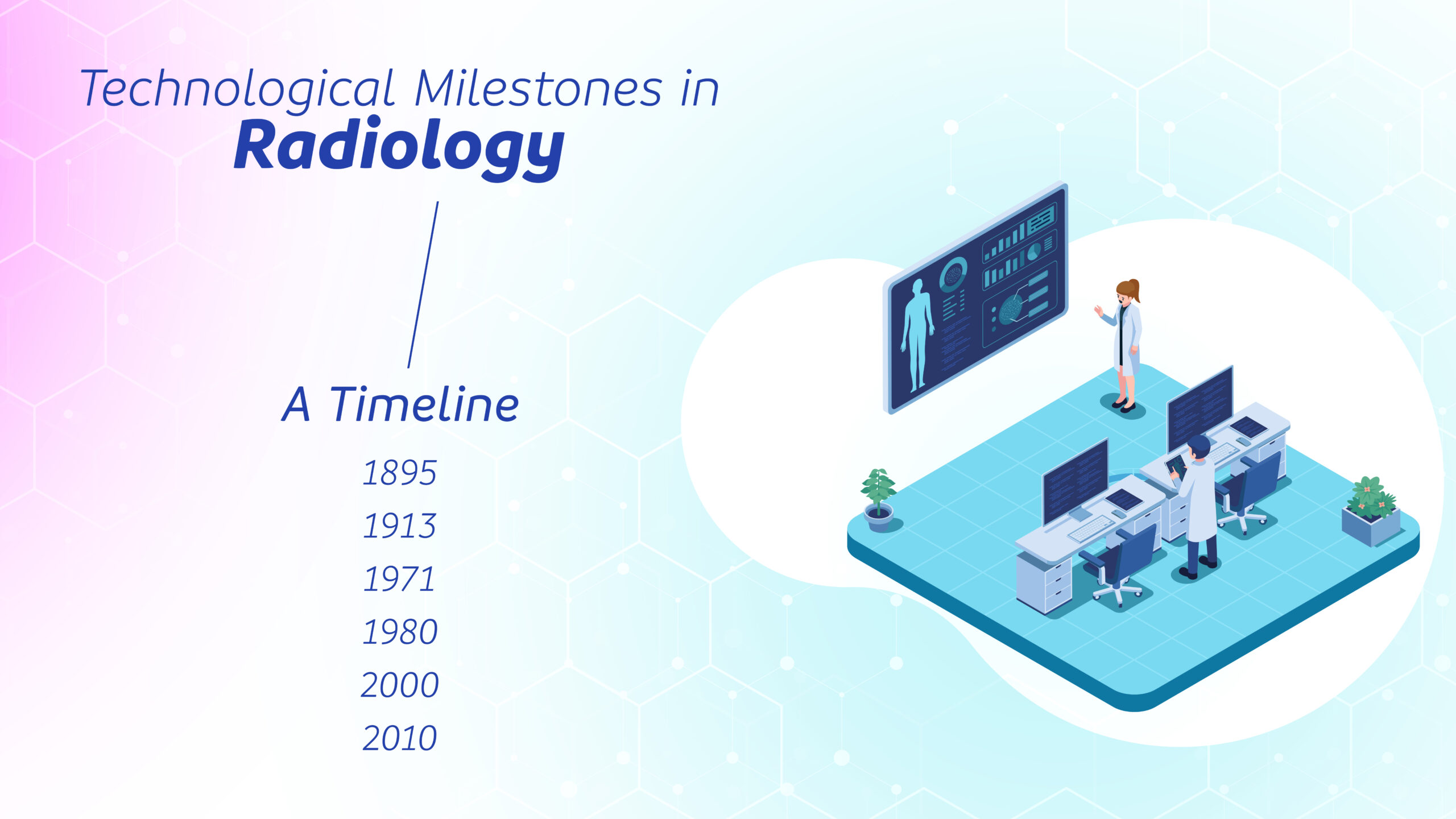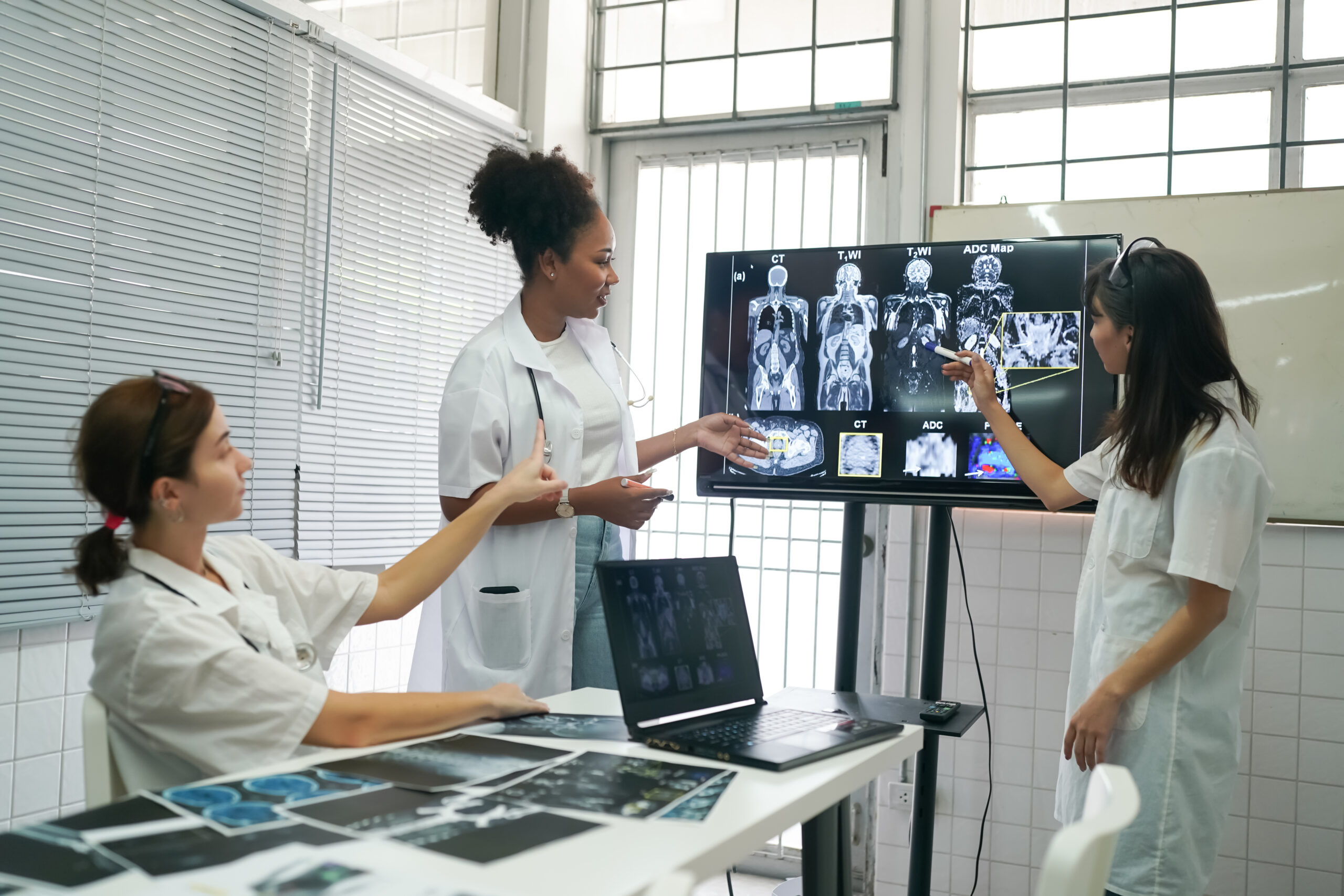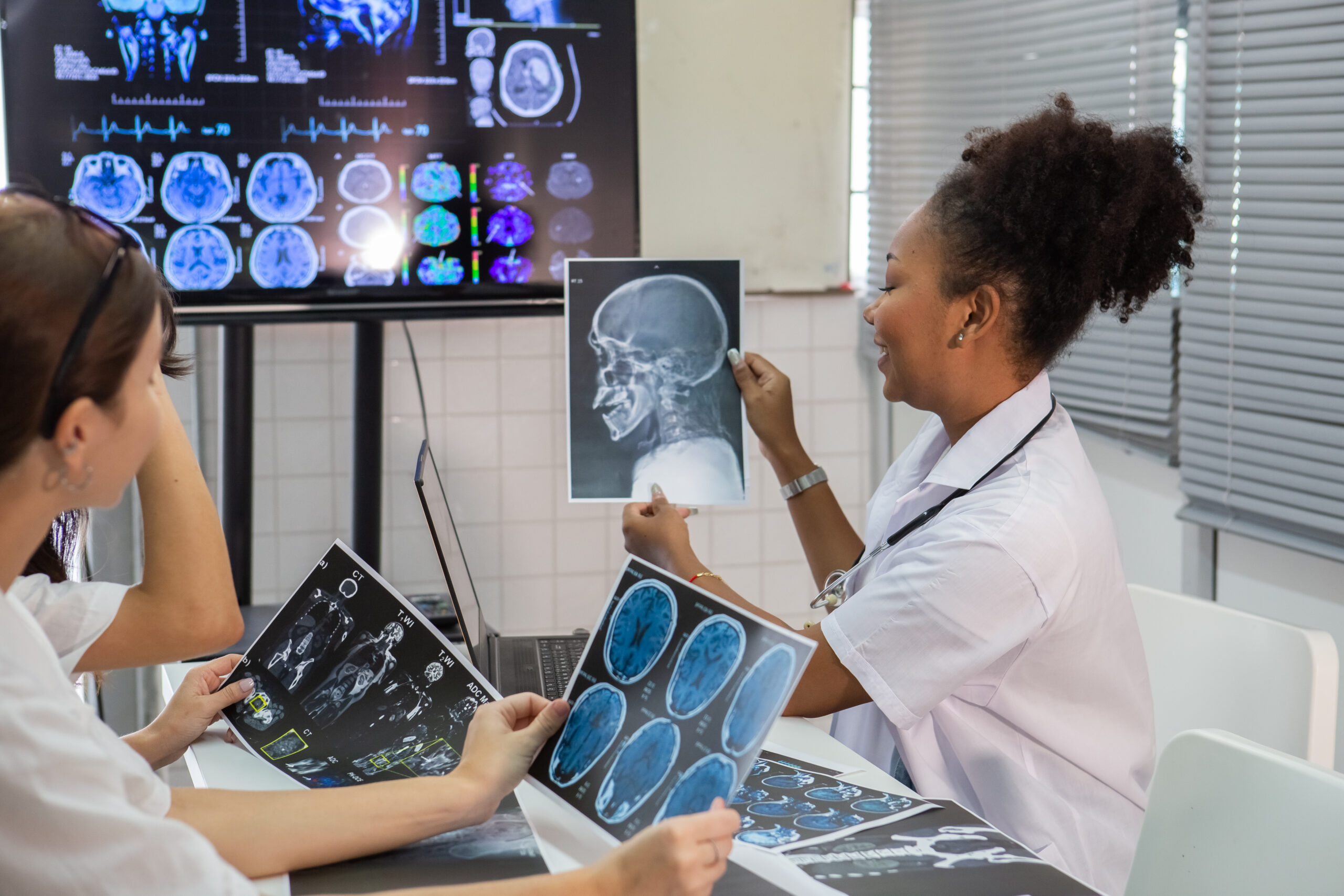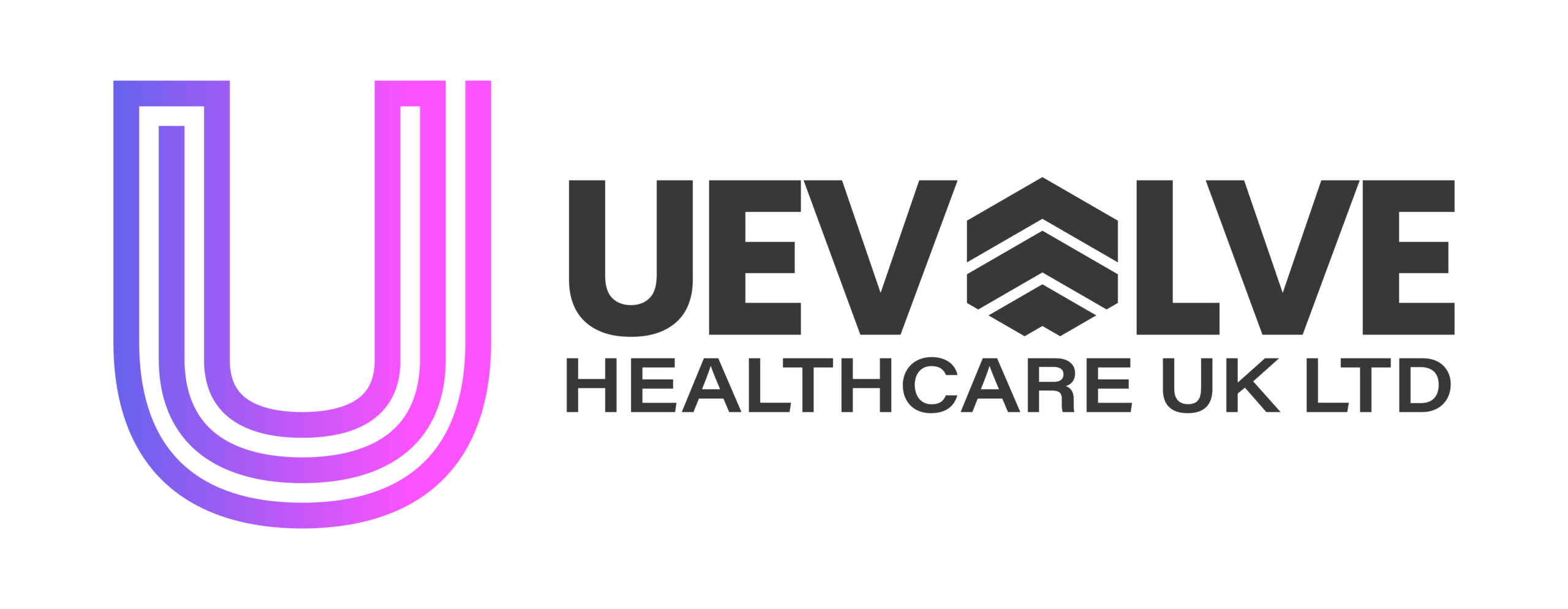The Impact of AI on Diagnosis and Workflow
- Home
- The Impact of AI on Diagnosis and Workflow

- Connect Admin
- 0 Comments
Radiology, the field that enables physicians to peer into the human body through imaging, has always been at the forefront of technological advancements. The integration of Artificial Intelligence (AI) in radiology is one of the most significant transformations in recent years, offering vast potential to enhance diagnostic accuracy, streamline workflows, and optimize the role of radiologists. This blog will explore how AI is reshaping radiology, discuss the current trends in radiology technology, and highlight the profound impact AI has on diagnostic precision and efficiency.
The Growing Need for AI in Radiology
As medical imaging technology advances, radiologists are faced with a rising volume of imaging data. The increasing demand for diagnostic imaging, paired with a shortage of trained radiologists, has created a critical need for more efficient workflows. Additionally, interpreting complex imaging data requires extreme accuracy to avoid errors in diagnosis. Here, AI becomes a powerful tool, offering a range of benefits from image analysis to predictive analytics, ultimately enhancing both diagnostic accuracy and operational efficiency in radiology.
What is AI in Radiology?
AI in radiology refers to the application of machine learning (ML) and deep learning (DL) algorithms to assist radiologists in analyzing medical images. These algorithms are trained on vast datasets of medical images to identify patterns, detect abnormalities, and make predictions that support radiological diagnosis. With AI's ability to recognize subtle variations that may be invisible to the human eye, it is transforming the field by aiding radiologists in making more precise and faster diagnoses.
How AI is Enhancing Diagnostic Accuracy
One of the most significant benefits of AI in radiology is its capacity to improve diagnostic accuracy. The algorithms can detect minute details and provide insights based on patterns learned from thousands or millions of images, which can be particularly useful in identifying early signs of diseases.
Below are some areas where AI is making a substantial impact on diagnostic accuracy:
Detection of Cancer and Tumors
AI algorithms can assist radiologists by identifying malignant and benign lesions in imaging studies, such as mammograms, CT scans, and MRIs. In breast cancer screening, for example, AI has demonstrated high accuracy in detecting small lesions, even those that might be missed by human radiologist. Studies show that AIded radiology in cancer detection can reduce the rate of false negatives and improve early diagnosis, which is crucial for effective treatment.
Neurological Imaging
In neurological imaging, AI can enhance the detection of conditions such as Alzheimer's disease, stroke, and multiple sclerosis by analyzing subtle changes in brain scans. AI algorithms can detect early signs of neurodegeneration and provide valuable information for early intervention, potentially delaying the progression of these diseases.
Cardiovascular Disease Detection
AI algorithms have shown promise in identifying cardiovascular conditions by analyzing echocardiograms and CT angiography images. For instance, AI can assist in detecting coronary artery disease, analyzing arterial plaque, and assessing the risk of stroke or heart attack. These insights enable proactive treatments and reduce the risk of acute events.
The Role of AI in Workflow Efficiency

AI in radiology not only enhances diagnostic accuracy but also brings a significant boost to workflow efficiency. Here’s how AI streamlines various processes in radiology departments:
Automated Image Analysis and Prioritization
AIdriven tools can analyze images as soon as they are produced, flagging cases with potential abnormalities for radiologists to review first. This triage system can prioritize critical cases, ensuring that patients with severe conditions receive prompt attention. By reducing the time radiologists spend on routine cases, AI allows them to focus on complex diagnoses and patient care.
Reduction in Reporting Time
Traditional radiology reports can be time-consuming, especially when detailed measurements and annotations are required. AI algorithms can automatically measure tumor sizes, calculate volumes, and quantify other parameters that radiologists typically report manually. This automation cuts down the reporting time, increasing overall throughput and reducing wait times for patients.
Minimizing Errors and Reducing Fatigue
With AI handling preliminary image analysis, radiologists experience reduced cognitive load, which is particularly beneficial in high-volume settings where burnout and fatigue are common. By minimizing repetitive tasks and providing decision support, AI reduces the likelihood of human errors and contributes to safer, higher-quality care.
Radiology Technology Trends Shaped by AI

AI is not an isolated trend but is transforming radiology alongside other advancements in technology. Here are some key radiology technology trends that AI is either driving or enhancing:
Integration of AI with PACS and RIS Systems
Picture Archiving and Communication Systems (PACS) and Radiology Information Systems (RIS) are essential tools for radiologists. Integrating AI into these systems enables seamless data exchange, allowing AI algorithms to access and analyze images directly from the databases. This integration leads to quicker insights and smoother workflow, as radiologists don’t need to switch between platforms.
3D Imaging and Reconstruction
AI-powered 3D imaging and reconstruction are providing radiologists with more detailed views of anatomical structures. By converting 2D images into 3D models, radiologists can better understand complex cases, especially in surgery planning and orthopedic diagnoses. This capability is particularly useful for visualizing tumors or vascular structures in a way that aids in precise surgical planning.
Natural Language Processing (NLP) for Report Analysis
NLP is a branch of AI that processes human language and extracts meaningful insights. In radiology, NLP can analyze radiology reports, extracting relevant data for research, quality control, and decision-making. For example, NLP algorithms can sift through thousands of reports to identify trends, track outcomes, and generate structured data for analytics.
Augmented and Virtual Reality (AR/VR)
While AR/VR technologies are still emerging in radiology, AI has the potential to enhance these tools by providing real-time data and insights within virtual environments. For instance, AI-powered AR glasses could highlight areas of interest in imaging scans, assisting radiologists and surgeons during procedures.


How Uevolve is Revolutionizing Teleradiology with AI
Uevolve, a teleradiology company, stands at the forefront of this AI revolution in the radiology space. By integrating cutting-edge AI tools with its teleradiology services, Uevolve enhances the capabilities of healthcare providers, especially in remote and underserved areas. The company leverages AI to streamline image interpretation, speed up report generation, and ensure that high-quality diagnostic insights are delivered in real-time. This enables healthcare providers, regardless of their location, to access expert radiology interpretations, empowering them to make informed, timely decisions.
In addition to improving diagnostic accuracy, Uevolve’s AI-powered platform facilitates the smooth flow of images and data, reducing the burden on radiologists and improving patient care delivery. By integrating AI with its telemedicine framework, Uevolve is helping to bridge gaps in healthcare access, offering faster, more reliable diagnostics even in resource-constrained settings.
Challenges of Implementing AI in Radiology
Despite the numerous benefits, implementing AI in radiology is not without its challenges. Understanding these obstacles is essential for developing AI tools that meet the needs of radiologists and patients alike.
- 1. Data Privacy and Security: Medical imaging data is highly sensitive, and AI requires extensive datasets for training. Ensuring the privacy and security of patient information is paramount, and many radiology departments must adopt strict protocols to safeguard data while still enabling AI development.
- 2. Interpretability of AI Decisions: One challenge with AI, particularly with deep learning models, is the “black box” problem, where it’s difficult to understand how the algorithm arrived at a particular decision. This lack of transparency can hinder trust for radiologists and healthcare providers who must rely on AI recommendations in clinical settings.
- 3. Regulatory and Ethical Concerns: As AI tools gain approval for clinical use, they must comply with regulatory standards. Governing bodies like the FDA in the U.S. have established frameworks for AI in healthcare, but navigating these regulations can be complex. Ethical concerns, such as ensuring fairness and avoiding biases in AI algorithms, are also important considerations.
- 4. Integration and Adoption: Integrating AI into existing radiology workflows requires substantial investments in infrastructure, software, and training. Additionally, radiologists and technicians must be trained to use AI tools effectively, which can be a barrier for institutions with limited resources.

The Future of AI in Radiology
The role of AI in radiology is expected to grow as technology advances. Future innovations may include more advanced predictive models, real-time AI guidance during procedures, and personalized diagnostic algorithms that consider a patient’s unique medical history and genetics. AI may eventually help radiologists predict patient outcomes, suggest treatment options, and even identify patients at risk of certain diseases before symptoms appear.
As AI continues to evolve, it will not replace radiologists but rather act as a trusted partner. The collaboration between AI and human radiologists is the key to unlocking new possibilities in diagnostic accuracy, efficiency, and patient care.
Conclusion
As AI continues to make its mark on the field of radiology, the potential to enhance diagnostic accuracy and streamline workflows is becoming increasingly clear. At Uevolve Teleradiology, we recognize the transformative power of AI in improving the speed and precision of medical image interpretation. By integrating advanced AI tools with our teleradiology services, we aim to provide reliable, timely insights to healthcare providers, especially in areas where access to radiology expertise may be limited. While challenges remain in adopting new technologies, the collaboration between AI and radiologists is crucial in improving patient outcomes. Looking ahead, AI will continue to support remote radiology, enhancing their capabilities and making healthcare more efficient, accessible, and precise for everyone.

Leave a Comment